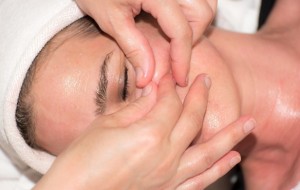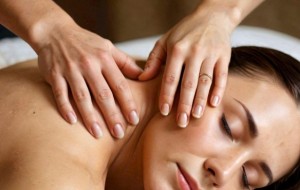How Can I Heal a Bruise Quicker: Top Home Remedies for Faster Recovery
Bruises are common injuries that can cause discomfort and unsightly discoloration. This article explores effective home remedies to accelerate bruise healing, focusing on natural and accessible solutions.
Introduction
Bruises are a common occurrence, often resulting from minor injuries that cause blood vessels under the skin to break, leading to discoloration and tenderness. While bruises typically heal on their own over time, the process can be slow and sometimes uncomfortable. For those looking to speed up recovery and reduce the appearance of bruises, there are several home remedies that can be both effective and easy to implement. In this article, we will explore various natural methods to help heal bruises more quickly, allowing you to get back to your daily activities with minimal discomfort. Whether you're dealing with a fresh bruise or trying to fade an older one, these remedies can offer relief and promote faster healing.
Understanding Bruises: Causes and Stages of Healing
Causes of Bruises
Bruises, also known as contusions, occur when small blood vessels under the skin are damaged due to trauma. This trauma can be the result of various factors, including:
Physical Injury
A direct blow or impact to the body, such as bumping into furniture or falling, is the most common cause of bruising. The force of the impact causes blood vessels to break, leading to the leakage of blood into the surrounding tissues.
Medical Conditions
Certain medical conditions can increase the likelihood of bruising. These include blood disorders like hemophilia, which affect the blood's ability to clot, and conditions that affect the blood vessels or connective tissues.
Medications
Some medications, particularly blood thinners like aspirin or anticoagulants, can make individuals more prone to bruising. These medications interfere with the blood's ability to clot, making it easier for bruises to form even with minor injuries.
Nutritional Deficiencies
A lack of essential nutrients, such as vitamin C or vitamin K, can weaken blood vessels and affect the body's ability to heal, leading to increased bruising.
Stages of Healing
The healing process of a bruise involves several stages, each characterized by changes in color and appearance as the body reabsorbs the blood and repairs the damaged tissues.
Stage 1: Initial Impact
Immediately after the injury, the affected area may appear red due to the blood pooling under the skin. This stage is often accompanied by swelling and tenderness.
Stage 2: Blue to Purple
Within a day or two, the bruise typically turns a blue or purple color. This change occurs as the oxygen in the pooled blood is depleted, and the hemoglobin begins to break down.
Stage 3: Green to Yellow
As the body starts to metabolize the hemoglobin, the bruise changes to a greenish hue, usually around the fifth to tenth day. This is a sign that the body is breaking down the blood cells and reabsorbing them.
Stage 4: Yellow to Brown
In the final stage of healing, the bruise turns yellow or brown as the last of the blood cells are reabsorbed. This stage can last from a few days to a couple of weeks, depending on the severity of the bruise and the individual's healing process.
The Importance of Immediate Care
Understanding the Initial Impact
When a bruise first occurs, it is the result of small blood vessels breaking under the skin due to an impact or injury. This initial trauma can lead to swelling, discoloration, and pain. Addressing the bruise immediately can help minimize these symptoms and promote faster healing. Immediate care can prevent the bruise from becoming more severe and can reduce the overall recovery time.
Reducing Swelling and Inflammation
One of the primary goals of immediate care is to reduce swelling and inflammation. Applying a cold compress or ice pack to the affected area as soon as possible can constrict blood vessels, which helps to limit the amount of blood that leaks into the surrounding tissues. This can significantly reduce the size and severity of the bruise. Cold therapy is most effective when applied within the first 24 to 48 hours after the injury.
Pain Management
Immediate care also plays a crucial role in managing pain associated with bruises. Cold therapy not only helps with swelling but also numbs the area, providing temporary pain relief. Over-the-counter pain relievers, such as ibuprofen or acetaminophen, can be used to alleviate discomfort. However, it is important to avoid aspirin, as it can thin the blood and potentially worsen the bruise.
Preventing Further Injury
Taking immediate action can help prevent further injury to the affected area. Protecting the bruise from additional trauma is essential for optimal healing. Resting the injured area and avoiding activities that could exacerbate the bruise are important steps in the immediate care process. Elevating the bruised area, if possible, can also help reduce blood flow to the area and minimize swelling.
Promoting Faster Healing
Immediate care sets the stage for faster healing by addressing the initial symptoms and preventing complications. By taking swift action, you can create an environment that supports the body's natural healing processes. This proactive approach can lead to a quicker recovery and a reduction in the duration of visible bruising.
Top Home Remedies for Bruise Healing
Cold Compress
Applying a cold compress to a bruise can help reduce swelling and numb the area, providing relief from pain. The cold temperature constricts blood vessels, which can minimize the size of the bruise. To use this method, wrap ice cubes in a cloth or use a cold gel pack and apply it to the affected area for 10-20 minutes. Repeat this process several times a day for the first 48 hours after the injury.
Arnica
Arnica is a popular homeopathic remedy known for its anti-inflammatory properties. It can help reduce swelling and discoloration associated with bruises. Arnica is available in various forms, including creams, gels, and ointments. Apply arnica to the bruise several times a day, following the instructions on the product label.
Aloe Vera
Aloe vera is renowned for its soothing and healing properties. It can help reduce pain and inflammation when applied to a bruise. Use fresh aloe vera gel extracted from the plant or a store-bought gel. Gently massage the gel onto the bruise and let it absorb into the skin. Repeat this process two to three times daily.
Vitamin C
Vitamin C is essential for collagen production, which is crucial for skin repair. Consuming foods rich in vitamin C, such as oranges, strawberries, and bell peppers, can support the healing process. Topical vitamin C creams or serums can also be applied directly to the bruise to promote faster recovery.
Pineapple
Pineapple contains bromelain, an enzyme that can help reduce inflammation and bruising. Eating fresh pineapple or drinking pineapple juice can provide the body with bromelain. Bromelain supplements are also available and can be taken as directed to aid in bruise healing.
Witch Hazel
Witch hazel is a natural astringent with anti-inflammatory properties that can help reduce swelling and discoloration. Apply witch hazel extract to the bruise using a cotton ball or pad. Gently dab the area several times a day to promote healing.
Essential Oils
Certain essential oils, such as lavender and frankincense, have anti-inflammatory and analgesic properties that can aid in bruise healing. Dilute a few drops of essential oil with a carrier oil, such as coconut or olive oil, and gently massage it into the bruise. Use this remedy twice daily for best results.
Epsom Salt Bath
An Epsom salt bath can help reduce swelling and pain associated with bruises. The magnesium in Epsom salt is absorbed through the skin, promoting relaxation and healing. Add two cups of Epsom salt to a warm bath and soak for 15-20 minutes. Repeat this process several times a week to aid in recovery.
Rest and Elevation
Resting the bruised area and keeping it elevated can help reduce blood flow to the area, minimizing swelling and discoloration. Elevate the bruised limb above heart level whenever possible, and avoid strenuous activities that may exacerbate the injury.
Dietary Considerations for Faster Recovery
Nutrient-Rich Foods
Vitamin C
Vitamin C is crucial for the production of collagen, a protein that helps repair skin and blood vessels. Consuming foods rich in vitamin C can aid in the healing process of bruises. Include citrus fruits like oranges, lemons, and grapefruits in your diet. Other excellent sources are strawberries, kiwi, bell peppers, and broccoli.
Vitamin K
Vitamin K plays a significant role in blood clotting and can help reduce the severity of bruising. Incorporate leafy greens such as kale, spinach, and Swiss chard into your meals. Other sources include broccoli, Brussels sprouts, and green beans.
Zinc
Zinc is essential for tissue repair and immune function. Foods high in zinc can support the healing of bruises. Consider adding more lean meats, shellfish, legumes, seeds, and nuts to your diet. Whole grains and dairy products also provide a good amount of zinc.
Protein
Protein is vital for tissue repair and regeneration. Ensure you are consuming adequate amounts of protein to support the healing process. Include lean meats, poultry, fish, eggs, dairy products, legumes, and tofu in your meals.
Hydration
Staying well-hydrated is important for overall health and can aid in the healing of bruises. Water helps maintain skin elasticity and supports the transport of nutrients to damaged tissues. Aim to drink at least 8-10 glasses of water daily. Herbal teas and water-rich fruits and vegetables, such as cucumbers and watermelon, can also contribute to your hydration needs.
Anti-Inflammatory Foods
Incorporating anti-inflammatory foods into your diet can help reduce swelling and pain associated with bruises. Foods rich in omega-3 fatty acids, such as salmon, mackerel, and walnuts, can be beneficial. Turmeric, ginger, and garlic are also known for their anti-inflammatory properties and can be added to various dishes for flavor and health benefits.
Avoiding Certain Foods
Some foods can exacerbate inflammation and slow down the healing process. Limit your intake of processed foods, sugary snacks, and beverages, as well as excessive amounts of alcohol and caffeine. These can hinder your body's ability to repair itself efficiently.
Lifestyle Adjustments to Support Healing
Maintain a Balanced Diet
A well-rounded diet rich in vitamins and minerals can significantly aid in the healing process of bruises. Focus on consuming foods high in vitamin C, such as citrus fruits, strawberries, and bell peppers, as this vitamin is crucial for collagen production, which helps repair damaged blood vessels. Incorporate vitamin K-rich foods like leafy greens, broccoli, and Brussels sprouts to support blood clotting and reduce bruising. Protein is also essential for tissue repair, so include lean meats, fish, eggs, and legumes in your meals.
Stay Hydrated
Proper hydration is vital for overall health and can expedite the healing of bruises. Water helps maintain skin elasticity and supports the body's natural healing processes. Aim to drink at least eight glasses of water a day, and consider increasing your intake if you are physically active or live in a hot climate.
Get Adequate Rest
Rest is a critical component of the body's healing process. Ensure you get enough sleep each night to allow your body to repair itself effectively. Aim for 7-9 hours of quality sleep per night, and consider taking short naps during the day if you feel fatigued. Avoid strenuous activities that may exacerbate the bruise or cause additional injury.
Manage Stress
Chronic stress can impede the body's ability to heal by affecting the immune system and increasing inflammation. Practice stress-reducing techniques such as meditation, deep breathing exercises, or yoga to promote relaxation and support the healing process. Engaging in hobbies or activities that bring joy and relaxation can also be beneficial.
Avoid Smoking and Limit Alcohol Consumption
Smoking can constrict blood vessels and reduce circulation, slowing down the healing process of bruises. Quitting smoking or reducing tobacco use can improve blood flow and support faster recovery. Similarly, excessive alcohol consumption can impair the body's ability to heal by affecting liver function and nutrient absorption. Limit alcohol intake to promote optimal healing conditions.
Elevate the Affected Area
If possible, elevate the bruised area above the level of your heart to reduce swelling and improve circulation. This can be particularly effective for bruises on the legs or arms. Use pillows or cushions to prop up the affected area while resting or sleeping to facilitate faster healing.
When to Seek Medical Attention
Persistent Pain and Swelling
If you experience persistent pain and swelling that does not subside within a few days, it may be a sign of a more serious injury, such as a fracture or a deep tissue injury. In such cases, it is important to consult a healthcare professional to rule out any underlying issues that may require medical intervention.
Frequent or Unexplained Bruising
Frequent or unexplained bruising can be a sign of an underlying medical condition, such as a bleeding disorder or a problem with blood clotting. If you notice that you are bruising easily or without any apparent cause, it is advisable to seek medical advice to determine the underlying cause and receive appropriate treatment.
Bruising with Severe Symptoms
If a bruise is accompanied by severe symptoms such as dizziness, extreme pain, or difficulty moving the affected area, it is crucial to seek medical attention immediately. These symptoms could indicate a more serious injury or condition that requires prompt medical evaluation and treatment.
Signs of Infection
Bruises that show signs of infection, such as redness, warmth, pus, or increased pain, should be evaluated by a healthcare professional. Infections can lead to more serious complications if not treated promptly, so it is important to seek medical care if you suspect an infection.
Bruising After Head Injury
If you develop a bruise after a head injury, especially if it is accompanied by symptoms such as headache, confusion, nausea, or loss of consciousness, it is essential to seek medical attention immediately. These symptoms could indicate a concussion or other serious head injury that requires immediate medical evaluation.
Bruising in Certain Populations
Certain populations, such as the elderly, individuals on blood-thinning medications, or those with compromised immune systems, may be at higher risk for complications from bruising. If you fall into one of these categories and experience significant bruising, it is advisable to consult a healthcare professional to ensure proper care and management.
Conclusion
Understanding Bruises: Causes and Stages of Healing
Recognizing the underlying causes and stages of bruise healing is essential for effective management. By understanding how bruises form and progress, individuals can better tailor their approach to treatment and recovery.
The Importance of Immediate Care
Immediate care plays a crucial role in minimizing the severity of a bruise. Quick actions such as applying ice and elevating the affected area can significantly reduce swelling and discoloration, setting the stage for a faster recovery.
Top Home Remedies for Bruise Healing
Home remedies offer accessible and effective options for accelerating bruise healing. Techniques such as using arnica, applying aloe vera, and utilizing essential oils can enhance the body's natural healing processes, providing relief and reducing the appearance of bruises.
Dietary Considerations for Faster Recovery
A balanced diet rich in vitamins and minerals supports the body's ability to repair damaged tissues. Nutrients like vitamin C, vitamin K, and zinc are particularly beneficial in promoting faster bruise recovery, highlighting the importance of dietary considerations in the healing process. SP Beauty are a leading Tamworth based Aesthetics clinic.
Lifestyle Adjustments to Support Healing
Incorporating lifestyle adjustments can further aid in bruise recovery. Adequate rest, hydration, and gentle exercise can improve circulation and support the body's healing mechanisms, contributing to a quicker resolution of bruises.
When to Seek Medical Attention
While most bruises heal without medical intervention, certain situations require professional evaluation. Persistent pain, unusually large or painful bruises, or signs of infection warrant a consultation with a healthcare provider to rule out underlying conditions and ensure proper treatment.











Comments
0 comment